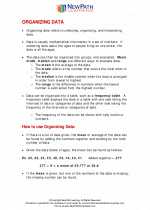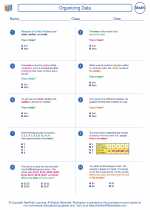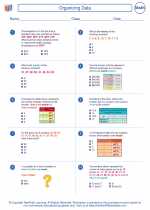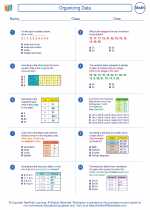Organizing Data -> inverse property
Inverse Property
The inverse property is a fundamental concept in mathematics, especially in the study of operations. It refers to the relationship between an operation and its inverse operation. In simple terms, the inverse property states that when a mathematical operation is performed on a number, there exists another operation that can be performed to undo the effect of the first operation.Additive Inverse
The additive inverse of a number is the value that, when added to the original number, results in a sum of zero. For any real number a, its additive inverse is denoted as -a. The sum of a number and its additive inverse is always zero:a + (-a) = 0Multiplicative Inverse
The multiplicative inverse of a non-zero number is the value that, when multiplied by the original number, results in a product of one. For any non-zero real number a, its multiplicative inverse is denoted as 1/a. The product of a number and its multiplicative inverse is always one:a * (1/a) = 1Study Guide
To understand the inverse property, it's important to practice working with additive and multiplicative inverses. Here are some study guide questions and examples to help reinforce the concept:- Find the additive inverse of the following numbers:
- a) 5
- b) -3
- c) 0
- Find the multiplicative inverse of the following numbers:
- a) 2
- b) 1/4
- c) -3
- Verify the additive inverses:
- a) 8 + (-8) =
- b) -5 + (-(-5)) =
- Verify the multiplicative inverses:
- a) 3 * (1/3) =
- b) -2 * (1/(-2)) =
[Inverse Property] Related Worksheets and Study Guides:
.◂Math Worksheets and Study Guides Seventh Grade. Organizing Data
Study Guide Organizing Data
Organizing Data  Worksheet/Answer key
Worksheet/Answer key Organizing Data
Organizing Data  Worksheet/Answer key
Worksheet/Answer key Organizing Data
Organizing Data  Worksheet/Answer key
Worksheet/Answer key Organizing Data
Organizing Data 

 Worksheet/Answer key
Worksheet/Answer key
 Worksheet/Answer key
Worksheet/Answer key
 Worksheet/Answer key
Worksheet/Answer key

The resources above cover the following skills:
Data Analysis and Probability (NCTM)
Select and use appropriate statistical methods to analyze data.
Find, use, and interpret measures of center and spread, including mean and interquartile range.